The Eisenhower Matrix - Simple Tool for Prioritization
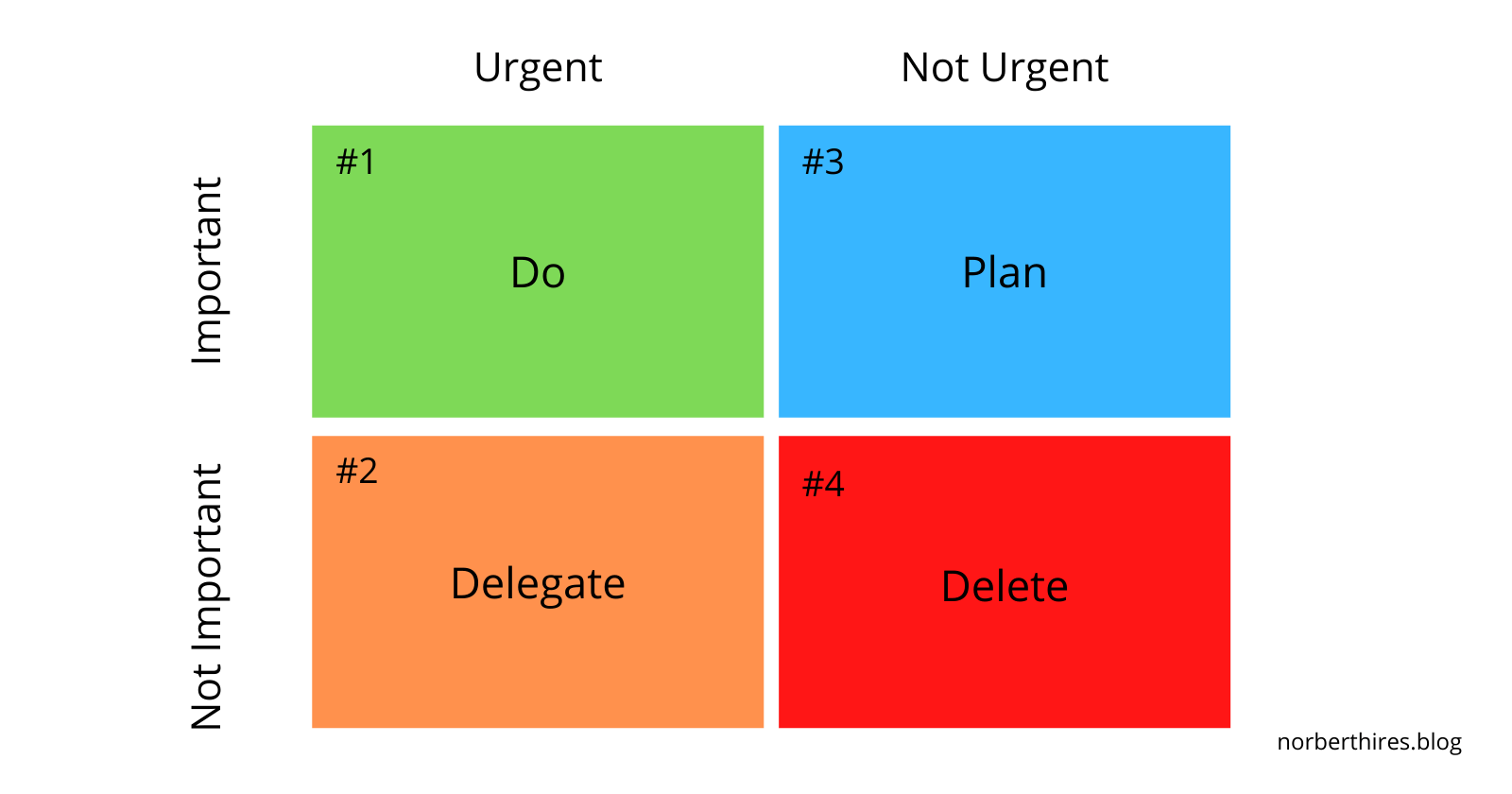
Monday mornings are the most chaotic period of the week. There are tasks left from the previous week, new commitments accumulated over the weekend, and an early morning email waiting for you.
You know everything doesn't fit into your day. You make a to-do list, but then what? The Eisenhower matrix can help you to prioritize tasks.
The method was used by the 34th President of the United States, Dwight D. Eisenhower, who was famous for his efficiency. During his two terms, Eisenhower established DARPA (the U.S. Department of Defense's research division), thanks to which the Internet was laid, laid the foundations for NASA, acted against racial discrimination, and kept the Soviet Union under control during the Cold War.
How did Eisenhower complete so many important projects?
First, the U.S. president (unlike many of his successors) relied heavily on expert advisors and often delegated tasks.
The President’s prioritization system was introduced in detail and made popular by writer Stephen Covey.
What is the essence of the Eisenhower matrix?
Using the Eisenhower matrix, tasks are organized based on two properties.
We evaluate the tasks according to the degree of importance and urgency and then draw a four-part matrix where we distribute them.
Although we tend to think of everything to be both important and urgent, in reality, this can only be true of the task from the perspective of others. We should always consider our own priorities.
We live in a world where urgency likes to put on the clothes of importance. Especially for many who, if has anything important to tackle, are happy to stand in front of us and declare that it is urgent for them. Yet many of the thousands of urgent things are not important.
# 1 Important and Urgent - Do it
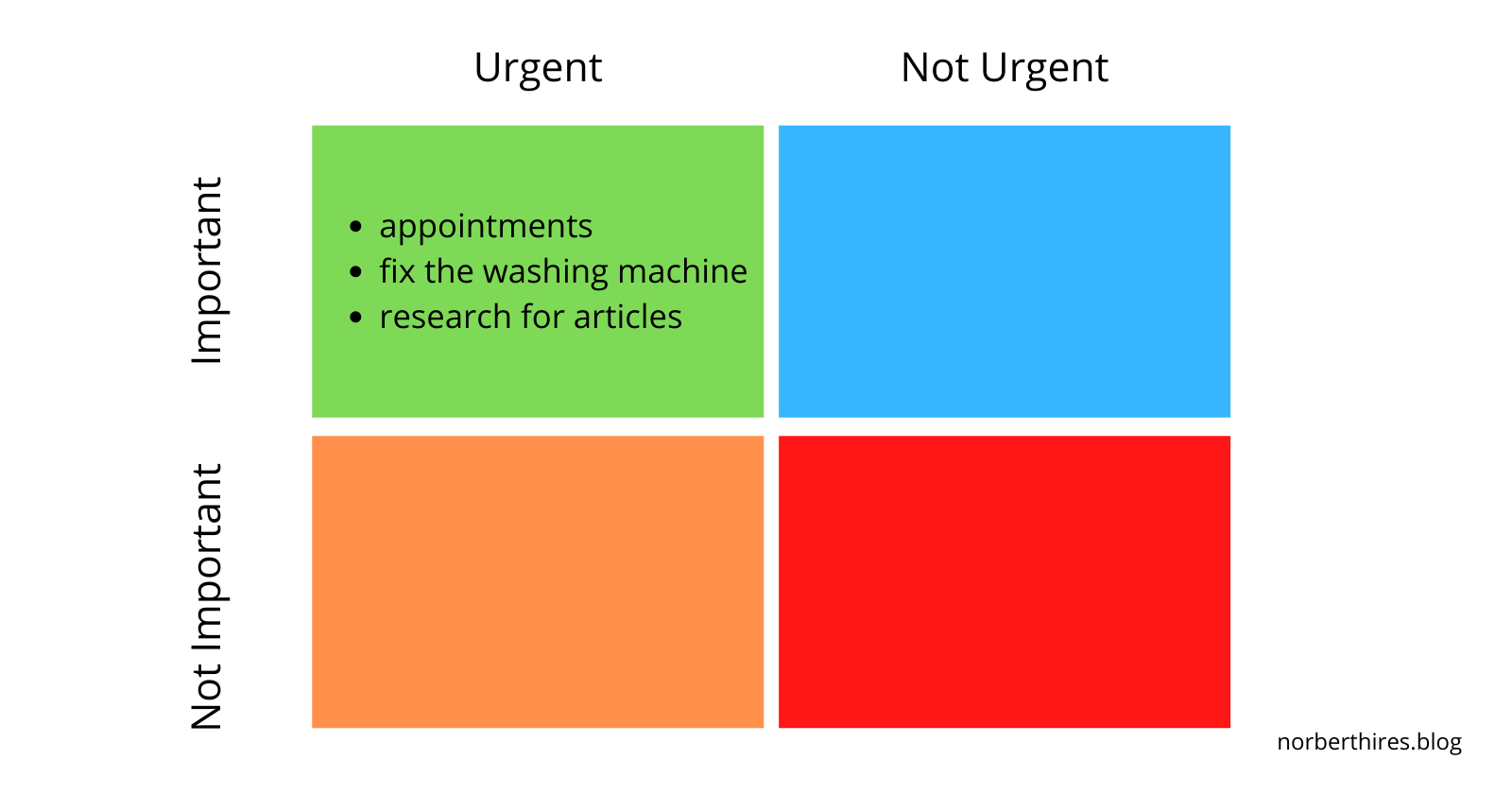
Important and urgent tasks are usually at the top of our to-do list, even without any prioritization system. Using the Eisenhower matrix, these tasks are a priority, they are worth starting the day with and it is important to finish important and urgent tasks as soon as possible.
What can be put under the important-urgent label?
It can be different for everyone because everyone's priority is different, even the same task on different days can bring various results.
For me, those are important and urgent tasks that either requires an immediate response or prevent me from performing other tasks.
For example:
- Require an immediate response: making an appointment with a dentist because of a sore tooth
- Prevent me from performing other tasks: If i want to publish an article, then I have to do the research for it by Wednesday, while this task is still important and not urgent on Tuesday, further postponement on Wednesday would jeopardize the completion of the article.
# 2 Urgent and Less Important - Delegate
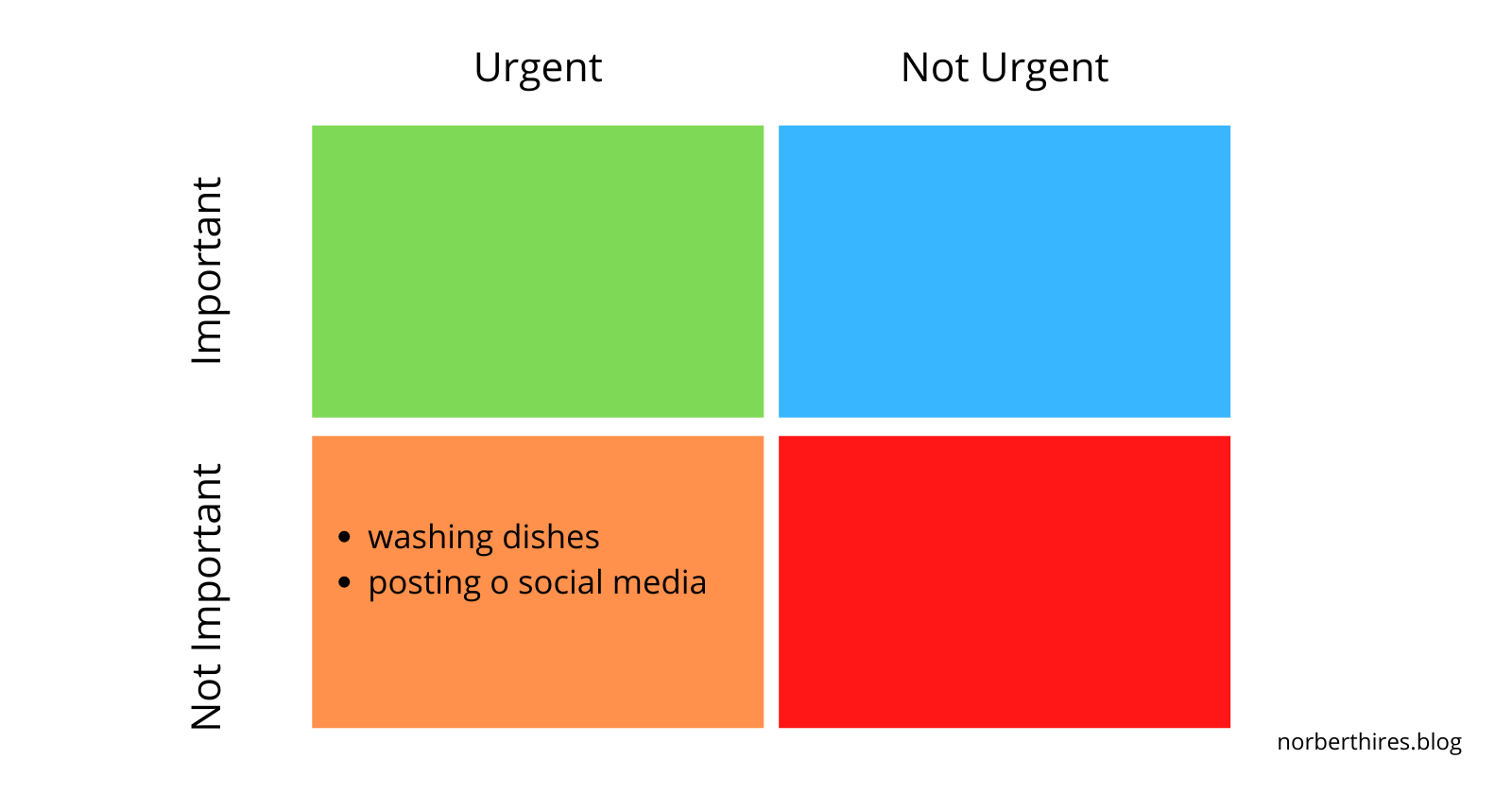
Urgent but less important tasks are typically low value-added tasks that often do not require much expertise and fit into the second quadrant of the Eisenhower matrix. We simply need to fight our way through these to-dos as soon as possible.
Stephen Covey advised that it is worth delegating these types of tasks. However, not everyone has a team of experts like Eisenhower. But there is no reason to panic. Even with scarce resources, you can effectively manage urgent but less important tasks.
People are not our only help for whom we can delegate tasks. With the myriad software and machines that make our lives easier, we can easily automate tasks we typically delegate today.
Dishwashing is an urgent but less important task for me that and a dishwasher can do a much better job than me.
Do you have to post on social media every day? You have the option to write posts in advance and schedule them with different programs (or you can delegate the writing of posts to a copywriter).
# 3 Important and Non-Urgent - Plan It
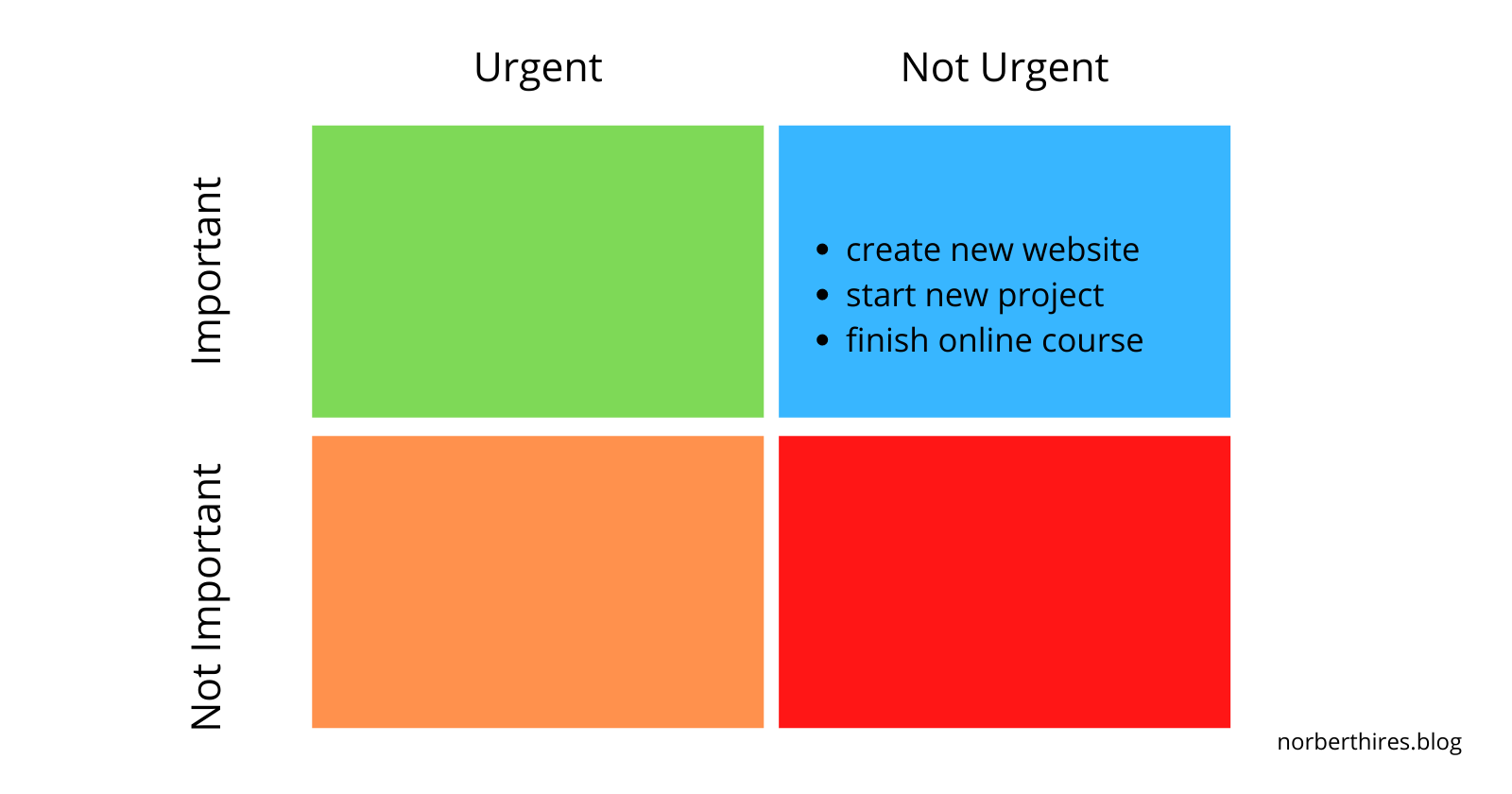
Painting the room? Creating a new website? Starting a new project? Completing a long-delayed online course?
Each is an important but not urgent task. We have to do it, but not necessarily today. The biggest problem with tasks of the third quadrant is that they are easily forgotten when they are on the task list.
To avoid oblivion, it’s a good idea to plan these types of tasks, assigning both time and resources to them. While you can use Asana, Todoist, and other great apps to set a deadline for your later tasks, a simple Google Calendar event will also make sure you remember your task later.
Important-non-urgent tasks are constantly competing with their urgent-non-important counterparts. While urgent tasks are in front of our noses, we do not see the consequences of less urgent ones so vividly. We don’t see or feel the potential loss of revenue without creating a new website at the moment, but unwashed dishes are tangible.
How do you take time to do important tasks? In addition to delegation and automation, non-important and urgent tasks can often be simply rejected.
# 4 Not urgent and not important - Delete or update
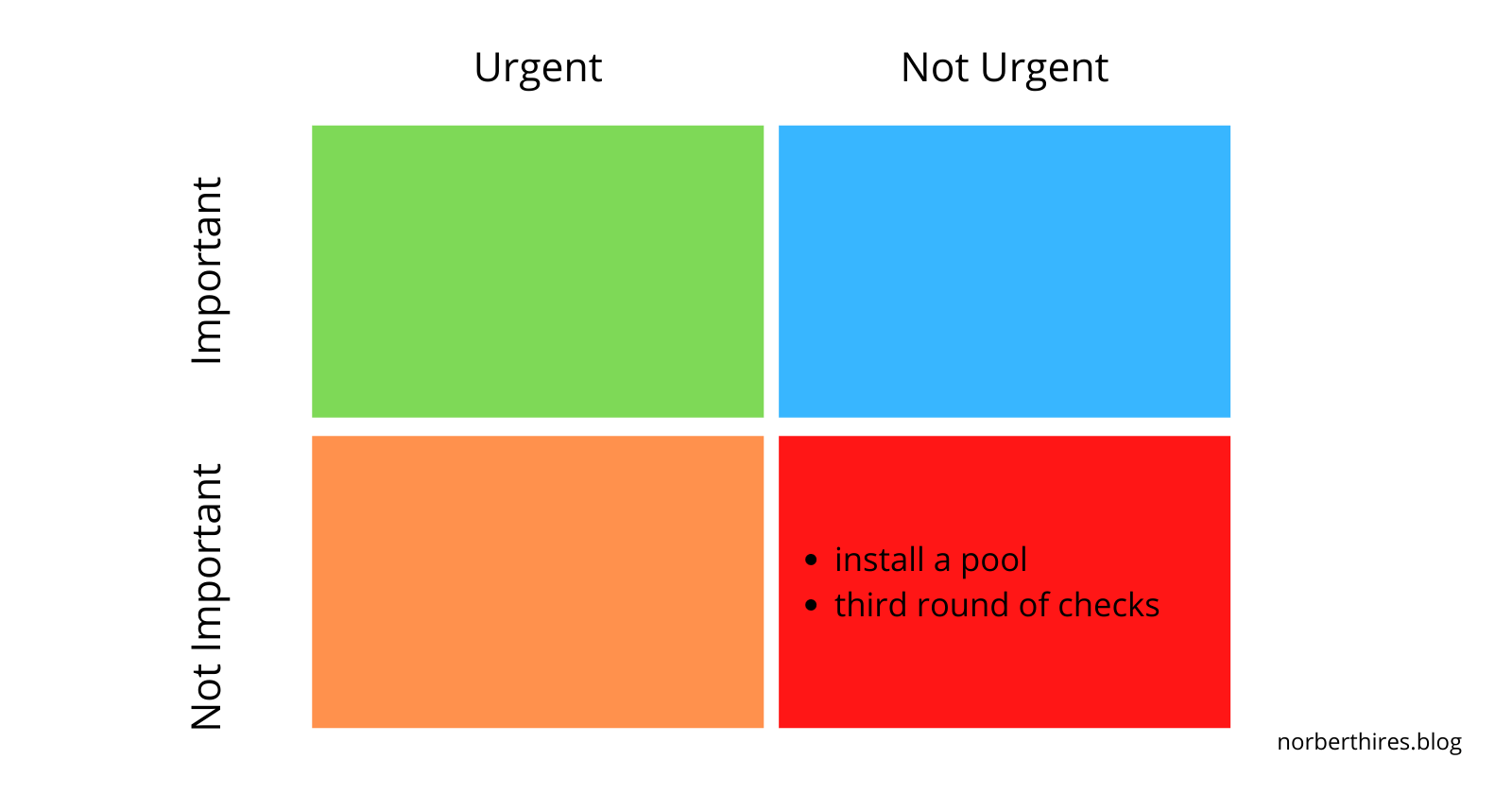
Until we find tasks in the other three boxes, the non-urgent and unimportant block is not worth dealing with. You can move them out of the to-do list or return to schedule them later.
Tasks previously found to be important but less rewarding can also be easily performed in the box with the lowest priority. If the return of a recurring task is low and yet time-consuming, you may want to consider deleting the task.
For a long time, I reviewed an article three times, looking for spelling mistakes and misspellings. This took 20 minutes of extra work per article at best, but I didn’t notice any significant difference between the texts checked two and three times.
Leaving the third round of control, although a few strokes can be discovered in my writings, I can deal with more important tasks in my free time, be it creating a new article or illustrative graphics.
Using the Eisenhower Matrix in Practice
The Eisenhower Matric helps you to prioritize tasks, so it is a good idea to write down your to-do list first, which you can later incorporate into one of the four categories according to the variables described above.
You can create a daily or monthly Eisenhower matrix, but you can also create personal and professional tables.
Shortcomings of the Eisenhower Box
The Eisenhower matrix does not solve all the questions either.
The method is extremely simple, so it ignores many variables. In addition to importance and urgency, it is worth considering, among other things, the complexity of the tasks, the resources required, or our own efficiency.
If we can’t count on anyone but ourselves to do the given task, then Quadrant 3 of the matrix also loses its meaning.
How can we correct these gaps and get the most out of the Eisenhower matrix?
- Write down your tasks on a piece of paper
- Place the individual tasks in the matrix according to the methodology described in the article
- Start your work with Quadrant 2 and 3 tasks, as these can be delegated, and are mostly easy, less time-consuming tasks
- Continue with the simple 1 quadrant tasks
- Perform more complex important, urgent tasks (1).
With this small modification, we can also handle the complexity and time required for tasks using the Eisenhower matrix.
When planning everyday to-dos, I don’t feel like using the Eisenhower matrix would have made it more efficient, so I prefer to use the method for monthly and weekly planning.
Thinking over a longer period of time, more tasks come together and important, non-urgent tasks come up much more often.



